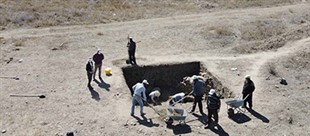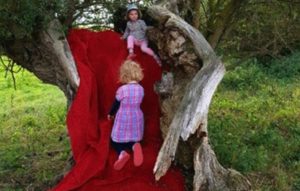The discovery of a 3,500-year-old paving stone, described as the “ancestor” of Mediterranean mosaics, offers illuminating details into the daily lives of the mysterious Bronze Age Hittites.
The assembly of over 3,000 stones — in natural shades of beige, red and black, and arranged in triangles and curves — was unearthed in the remains of a 15th century BC Hittite temple, 700 years before the oldest known mosaics of ancient Greece.
“It is the ancestor of the classical period of mosaics that are obviously more sophisticated. This is a sort of first attempt to do it,” says Anacleto D’Agostino, excavation director of Usakli Hoyuk, near Yozgat, in central Turkey.
At the site three hours from Turkey’s capital Ankara, first located in 2018, Turkish and Italian archaeologists painstakingly use shovels and brushes to learn more about the towns of the Hittites, one of the most powerful kingdoms in ancient Anatolia.
“For the first time, people felt the necessity to produce some geometric patterns and to do something different from a simple pavement,” D’Agostino says.
“Maybe we are dealing with a genius? Maybe not. It was maybe a man who said ‘build me a floor’ and he decided to do something weird?”
The discovery was made opposite Kerkenes mountain and the temple where the mosaic is located was dedicated to Teshub, the storm god worshipped by the Hittites, equivalent to Zeus for the ancient Greeks.
“Probably here the priests were looking at the picture of Kerkenes mountain for some rituals and so on,” D’Agostino adds.
sharjah24




